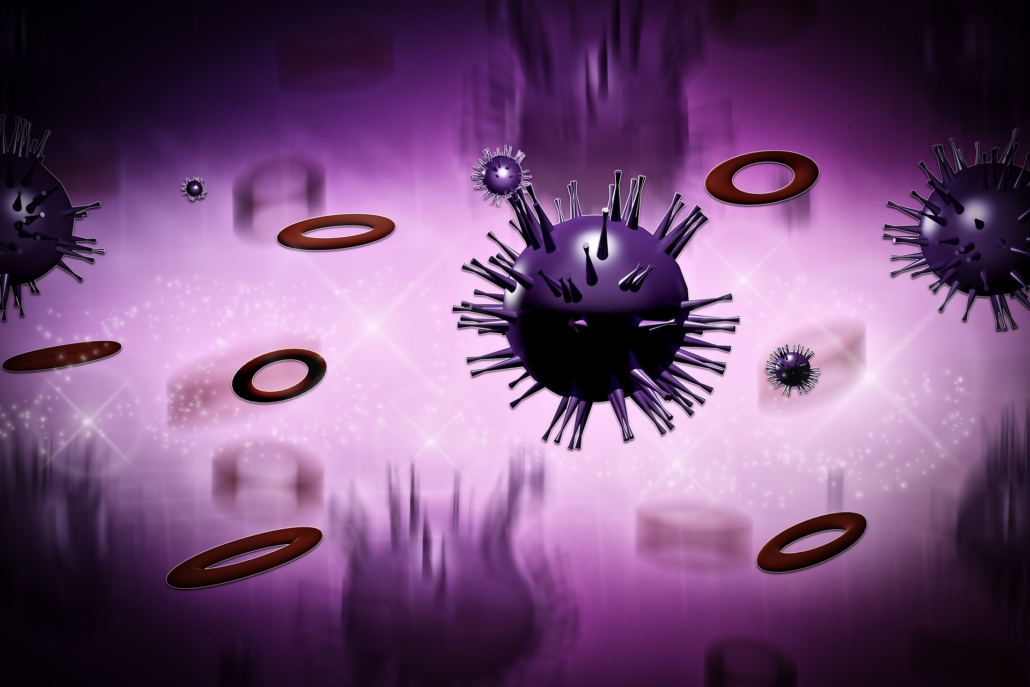What is HIV?
 Despite the fact that the immunodeficiency virus is the most studied virus on the planet, most people still do not have clear understanding of what HIV is.
Despite the fact that the immunodeficiency virus is the most studied virus on the planet, most people still do not have clear understanding of what HIV is.
HIV is a human immunodeficiency virus, which in turn causes the disease – HIV-infection. According to UNAIDS, more than 70 million people have been infected with HIV since the start of the epidemic, of which 32 million have already died. The prevalence of the disease is not uniform between countries and even continents. For example, more than 25 million people with HIV live on the African continent, in Russia the number of cases has long exceeded one million, 10 thousand people with positive HIV-status are in Estonia.
The first case of HIV-infection in Estonia was recorded in 1988. Despite the long term of the case, medical progress allows the null patient to fully live his life nowadays. Sexual transmission of HIV-infection in Estonia was common until 1999. In 2001, the number of new cases reached nearly 1,500 people and Estonian government has announced an epidemic.
HIV-infection is a chronic infectious disease characterized by a slow destruction of the immune system. An interesting feature of HIV-infection is that a person can live for years without suspecting any signs of the disease. However, symptoms may be present, but people usually attribute them to the flu or viral respiratory infections.
The clinical picture on the initial stages may actually resemble flu symptoms. A person develops a runny nose, fever, pharyngitis, loss of appetite, lymph nodes enlargement and there are many other symptoms. The symptomatology caused is due to the fact that the virus actively integrates into human DNA and thereby produce a greater number of new viral particles. At the same time, new viral particles attack the cells of the immune system, thereby causing a flu-like state in humans. This phase usually does not last long, which does not allow a person to suspect something serious.
Subsequently, life goes on and person again does not notice any symptoms of the disease. At times, a person may be ill, which again writes off everything to a common cold. This can last for decades, depending on the individual characteristics of the human immune system. If during this time a person is not examined and does not take appropriate treatment, then after 10 -15 years, HIV-infection passes into the stage of AIDS.
Often people do not see the difference between HIV and AIDS. HIV-infection is a disease that is caused by human immunodeficiency viruses. While AIDS is Acquired Immunodeficiency Syndrome, the last stage of HIV-infection. Most often, AIDS develops in patients who are not aware of their HIV status or in patients, who refuse treatment. It is important to understand that you can not get AIDS. You can only get infected with HIV.
Often, diseases tend to develop in certain key population, HIV- infection is also not exception. The risk group includes men who have sex with men, people who inject drugs, and sex workers. However, everybody should remember that anyone who does not take appropriate precautions could become infected with HIV.
There are three ways to transmit the virus: through blood, unprotected sexual intercourse, and the vertical path, that is, from mother to baby. Nowadays, vertical path is less common, usually during pregnancy the future mother is tested for HIV-infection. If a pregnant woman is found to have HIV infection, she is prescribed special therapy. The treatment reduces the viral load in the mother’s blood, thereby she can give birth to a healthy baby.
The virus can be easily transmitted through the blood, as it immediately enters the bloodstream. Cases of infection through blood involve the use of infected needles, transfusion of blood or its components, and organ transplants. There is a fact that in many countries, by the law gay people are prohibited to donate blood.
It is also believed that to be infected with HIV when tattooing is possible only theoretically. Due to the fact that the virus is unstable in the environment, and careful processing of tools in tattoo parlors has a detrimental effect on the virus itself. In addition, the widespread use of disposable needles in tattoo parlors minimizes the risk of infection.
Promiscuity also lead to the spread of HIV-infection. Sex can be either homosexual or heterosexual. It is believed that the risk of HIV-infection is higher with homosexual intercourse, especially for a passive partner during anal sex. The risk of acquiring HIV-infection increases if a person at the same time has another sexually transmitted disease.
It is important to remember that the person can get the HIV-infection only by the above mentioned ways. It is impossible to get the virus through shaking hands, using one dish while eating, sneezing, kissing, hugging, biting insects, including mosquitoes.
As well it is important to remember that despite all the achievements of medicine in this matter, HIV-infection remains a serious disease. You need to understand this topic well in order to maintain your health and your loved ones.
Stay healthy!

Sagib Kulbayev
